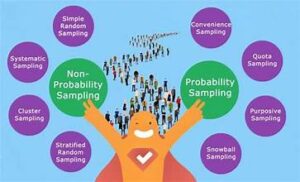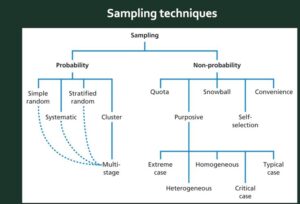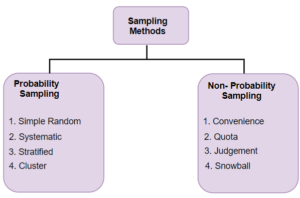
In the ever-evolving field of market research, sampling methods play a pivotal role in gathering insights and making data-driven decisions. As businesses strive to understand consumer preferences and market trends more accurately, innovative sampling methods are emerging to enhance both accuracy and efficiency. This article explores the latest advancements in sampling techniques and their impact on market research.
1. Introduction to Sampling in Market Research
Sampling is the process of selecting a subset of individuals from a larger population to represent the whole. Accurate sampling is crucial for deriving meaningful insights and making informed decisions. Traditional sampling methods, such as random sampling and stratified sampling, have served well in the past. However, with the advent of new technologies and methodologies, the landscape of sampling in market research is rapidly changing.
2. The Need for Innovation in Sampling Methods
As markets become more complex and consumer behavior becomes more nuanced, traditional sampling methods may fall short. Issues such as non-response bias, sample size limitations, and the challenge of reaching diverse demographics highlight the need for innovative approaches. These innovations aim to address these challenges and improve the reliability and efficiency of market research.
3. Advanced Sampling Techniques
3.1. Big Data Analytics
Big Data Analytics has revolutionized sampling by providing access to vast amounts of data. By analyzing large datasets from social media, online behavior, and transaction records, researchers can identify trends and patterns that were previously difficult to detect. This data-driven approach allows for more accurate and representative samples.
- Advantages: Increased accuracy in identifying target demographics, better insights into consumer behavior.
- Challenges: Requires sophisticated data processing tools and expertise.
3.2. Adaptive Sampling
Adaptive Sampling involves adjusting the sampling strategy based on real-time data and interim results. This dynamic approach allows researchers to modify their sampling methods as the study progresses, leading to more efficient data collection and reduced errors.
- Advantages: Flexibility in sampling, ability to address emerging issues promptly.
- Challenges: Complexity in implementation, need for continuous monitoring.
3.3. Online Panels and Communities
Online panels and communities offer a pre-recruited group of participants who are willing to provide feedback on various topics. These panels can be segmented by demographics, interests, and behaviors, enabling researchers to access targeted groups quickly and cost-effectively.
- Advantages: Access to a diverse pool of participants, quicker turnaround times.
- Challenges: Potential for panel fatigue, need for maintaining panel quality.
3.4. Mobile Surveys and Geo-Targeting
With the proliferation of smartphones, mobile surveys have become a popular sampling method. Geo-targeting further enhances this approach by sending surveys to users based on their location. This method is particularly useful for capturing real-time responses and understanding geographic trends.
- Advantages: Real-time data collection, high response rates from mobile users.
- Challenges: Issues with privacy and data security, limited to users with smartphones.
4. Improving Accuracy with Innovative Techniques
Innovative sampling methods not only enhance efficiency but also improve the accuracy of market research. By leveraging technology and data-driven approaches, researchers can achieve more reliable results. Here’s how:
4.1. Reducing Bias
Advanced techniques like Big Data Analytics and Adaptive Sampling help reduce various forms of bias, such as non-response and selection bias. By continuously adjusting sampling strategies and utilizing comprehensive datasets, researchers can obtain a more representative sample.
4.2. Enhancing Representation
Online panels and mobile surveys enable researchers to reach diverse and segmented populations. This improved representation ensures that the sample mirrors the broader population, leading to more accurate insights.
4.3. Increasing Efficiency
Innovative methods streamline the data collection process, reducing the time and cost associated with traditional sampling. Mobile surveys and online panels, for example, provide faster access to data, allowing for more agile decision-making.
5. Case Studies of Innovative Sampling Methods
5.1. Case Study: Big Data Analytics in Retail
A major retail chain used Big Data Analytics to refine its customer segmentation strategy. By analyzing purchase history and online interactions, the company developed more precise customer profiles and tailored its marketing efforts accordingly.
5.2. Case Study: Adaptive Sampling in Healthcare
A healthcare research firm employed Adaptive Sampling to study patient satisfaction. By adjusting the sampling strategy based on preliminary results, the firm improved the accuracy of its findings and identified key areas for improvement in patient care.
6. Conclusion
Innovations in sampling methods are transforming market research by enhancing accuracy and efficiency. Techniques such as Big Data Analytics, Adaptive Sampling, online panels, and mobile surveys offer new opportunities for obtaining reliable insights and making data-driven decisions. As these methods continue to evolve, they will play a crucial role in shaping the future of market research.



